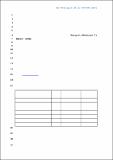Por favor, use este identificador para citar o enlazar a este item:
http://hdl.handle.net/10261/156791COMPARTIR / EXPORTAR:
 SHARE SHARE
 CORE
BASE CORE
BASE
|
|
| Visualizar otros formatos: MARC | Dublin Core | RDF | ORE | MODS | METS | DIDL | DATACITE | |

| Título: | The transition from somatic to germline identity shows conserved and specialized features during angiosperm evolution |
Autor: | Lora, Jorge CSIC ORCID ; Herrero Romero, María CSIC ORCID ; Tucker, Matthew R.; Hormaza Urroz, José Ignacio CSIC ORCID | Fecha de publicación: | oct-2017 | Editor: | John Wiley & Sons | Citación: | Lora J, Herrero M, Tucker MR, Hormaza JI. The transition from somatic to germline identity shows conserved and specialized features during angiosperm evolution. New Phytologist 216 (2): 495–509 (2017) | Resumen: | How and why specific plant cells adopt germline identity during ovule development has proved challenging to address, and the pathways that are active in the ovules of basal/early-divergent angiosperms possessing a multilayered nucellus are still unclear. Here, we compare megasporogenesis between two early-divergent angiosperms (Annona cherimola and Persea americana) and the evolutionarily derived Arabidopsis thaliana, studying the three-dimensional spatial position of the megaspore mother cell (MMC), the compositional details of the MMC wall and the location of PIN1 expression. Specific wall polymers distinguished the central position of the MMC and its meiotic products from surrounding tissues in early-divergent angiosperms, whereas, in A. thaliana, only callose (in mature MMCs) and arabinogalactan proteins (AGPs) (in megaspores) distinguished the germline. However, PIN1 expression, which regulates polar auxin transport, was observed around the MMC in the single-layer nucellus of A. thaliana and in the multilayered nucellus of A. cherimola, or close to the MMC in P. americana. The data reveal a similar microenvironment in relation to auxin during megasporogenesis in all three species. However, the different wall polymers that mark MMC fate in early-divergent angiosperms may reflect a specific response to mechanical stress during differentiation, or the specific recruitment of polymers to sustain MMC growth. | Descripción: | 15 Pags.- 8 Figs. The definitive version is available at: http://nph.onlinelibrary.wiley.com/hub/journal/10.1111/(ISSN)1469-8137 | Versión del editor: | http://dx.doi.org/10.1111/nph.14330 | URI: | http://hdl.handle.net/10261/156791 | DOI: | 10.1111/nph.14330 | ISSN: | 0028-646X | E-ISSN: | 1469-8137 |
| Aparece en las colecciones: | (EEAD) Artículos (IHSM) Artículos |
Ficheros en este ítem:
| Fichero | Descripción | Tamaño | Formato | |
|---|---|---|---|---|
| HormazaI_NewPhytol_2017.pdf | 676,39 kB | Adobe PDF |  Visualizar/Abrir |
CORE Recommender
SCOPUSTM
Citations
34
checked on 13-abr-2024
WEB OF SCIENCETM
Citations
30
checked on 27-feb-2024
Page view(s)
367
checked on 18-abr-2024
Download(s)
297
checked on 18-abr-2024
Google ScholarTM
Check
Altmetric
Altmetric
NOTA: Los ítems de Digital.CSIC están protegidos por copyright, con todos los derechos reservados, a menos que se indique lo contrario.
